#Scott Bernardi
Explore tagged Tumblr posts
Text
the liberal national party candidate for brisbane saying he started hating the greens when he was a campaigner for marriage equality because he thought that if the greens had come to the table sooner marriage equality could have passed earlier my brother in christ you are in the tony abbott party. the scott morrison party. the cory bernardi party.
4 notes
·
View notes
Text
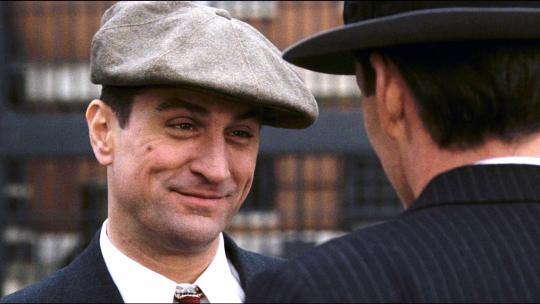
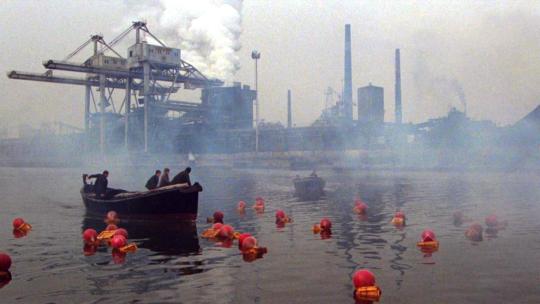
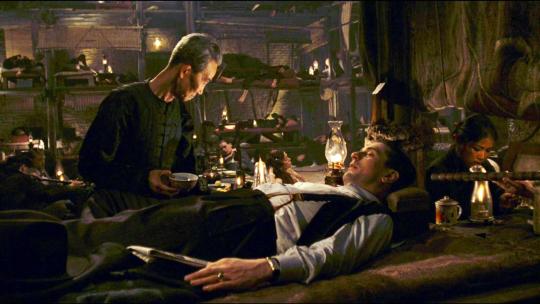
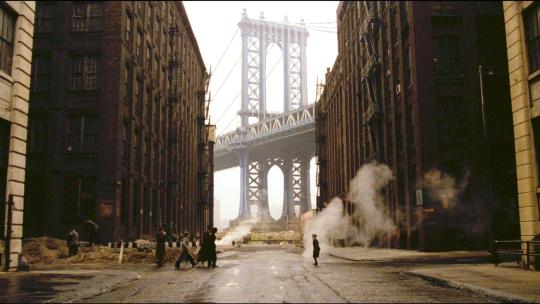
#ProyeccionDeVida
🎥 Cine Italiano, presenta:
🎬 “ERASE UNA VEZ EN AMERICA” [Once Upon a Time in America]
🔎 Género: Drama / Mafia / Crimen / Amistad / Años 20, 30.y 60 / Película de Culto
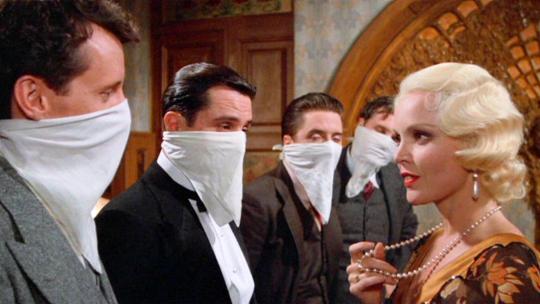
⌛️ Duración: 225 minutos
✍️ Guión: Sergio Leone, Leonardo Benevenuti, Piero de Bernardi, Enrico Medioli, Franco Arcalli y Franco Ferrini
🎼 Música: Ennio Morricone
📷 Fotografía: Tonino Delli Colli
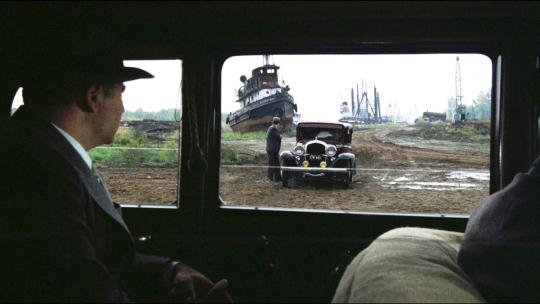
🗯 Argumento: A principios del siglo XX; David Aaronson, un pobre chaval judío, conoce a Max en los suburbios de Manhattan, otro joven de origen hebreo dispuesto a llegar lejos por cualquier método. Entre ellos nace una gran amistad y, con otros colegas, forman una banda que prospera rápidamente, llegando a convertirse, en los tiempos de la Ley Seca (1920-1933), en unos importantes mafiosos.
👥 Reparto: Robert De Niro (David "Noodles" Aaronson), Elizabeth McGovern (Deborah Gelly), James Woods (Max), Joe Pesci (Frankie Minaldi), Jennifer Connelly (Deborah Gelly), Tuesday Weld (Carol), Treat Williams (James Conway O'Donnell), Scott Schutzman Tiler (David "Noodles" Aaronson) y James Hayden (Patrick 'Patsy' Goldberg)
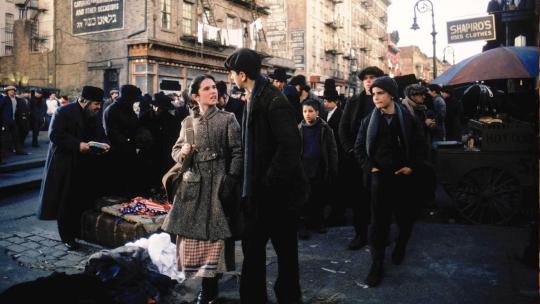
📢 Dirección: Sergio Leone
© Productora:Warner Bros.
👤 Productor: Arnon Milchan Productions
🌎 País: Estados Unidos
📅 Año: 1984
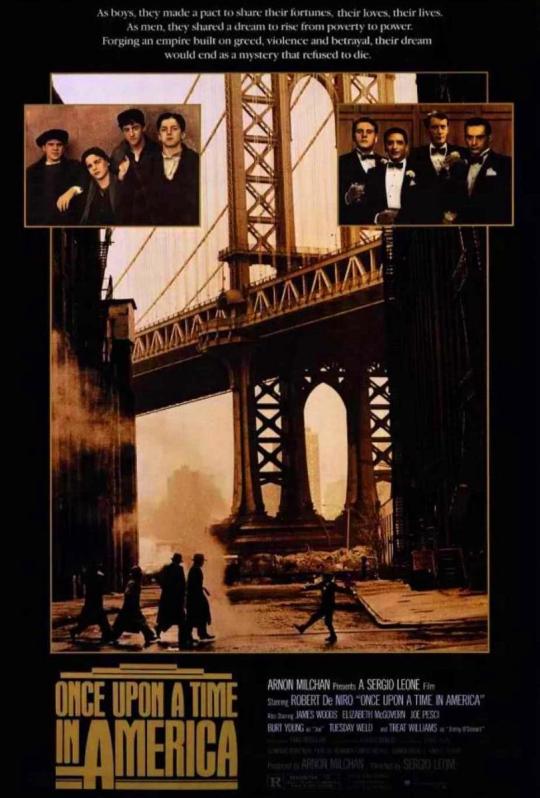
📽 Proyección:
📆 Jueves 26 de Setiembre
🕔 6:30pm.
🏡 Auditorio Leonardo Da Vinci del Instituto Italiano de Cultura (av. Arequipa 1055, Urbanización Santa Beatriz - Lima)
🚶♀️🚶♂️ Ingreso libre
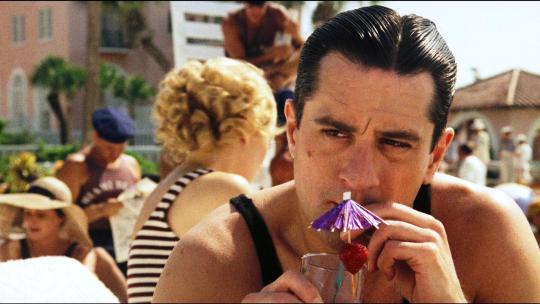
🎤 El dato: Después de la proyección se realiza el Conversatorio a cargo de Sebastián Pimentel (crítico de cine).
0 notes
Text
Панель:
Фильтр-Банк
Скотта Бернарди

Спаянный года 3 назад, и протестированный на «скорое ухо» на макетной плате, один канал этого удивительного прибора, извлёк из меня исключительно-ассертивную и крайне положительную импрессию. Однако я не только впечатлился тембрами выходных полос и уникальностью идеи Скотта (Four channel voltage controlled filter bank), но и удивился – отчего, этот так располагающий к себе продукт, не польщён вниманием электро-модульно-сборочного сообщества и одиноко пылится на сайте проекта (OG2)? Я решил исправить этот незаслуженно-имеющий-место-быть факт и (несмотря на наличие пары десятков проектов в состоянии активной работы) обратить в ближайшее время, зачехлённую ранее инициативу, в живо-творящую модульную плоть своей системы в одной 10-дюймовой панельКе (четыре State-Variable фильтра и мастер секция). Немаленьким, конечно, изДЕЛьиЦе выходит, но оно того стоит, в особенности после переписки с господином Бернарди, на предмет профита и его метода настройки LM13700 на null.
#DIY#Delian Diver#Modular Synth#Modular Synthesis#Delian Diver Modular#Synth DIY#Synth Panels#Faceplates#Synth UI#Interface#Scott Bernardi#Filter Bank#(og3)#State Variable Filter
2 notes
·
View notes
Photo
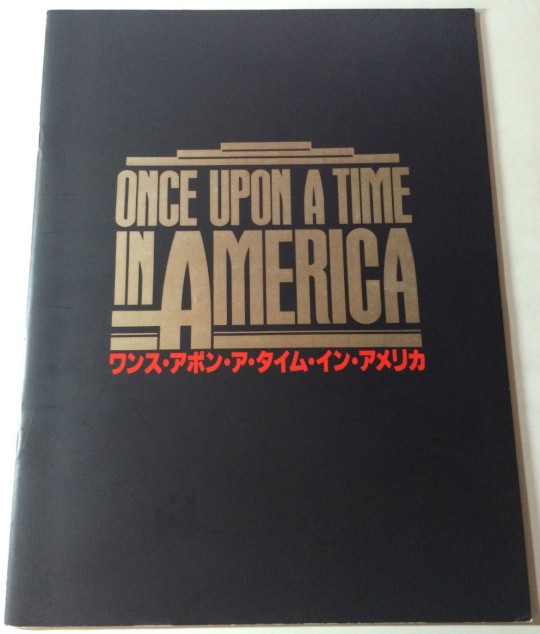

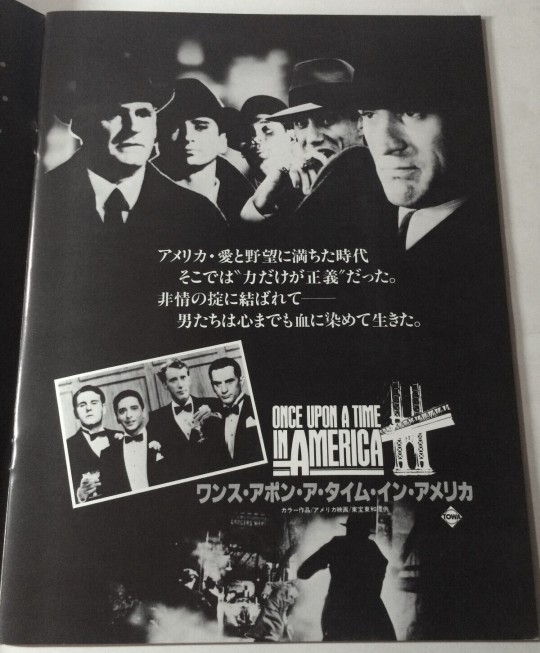
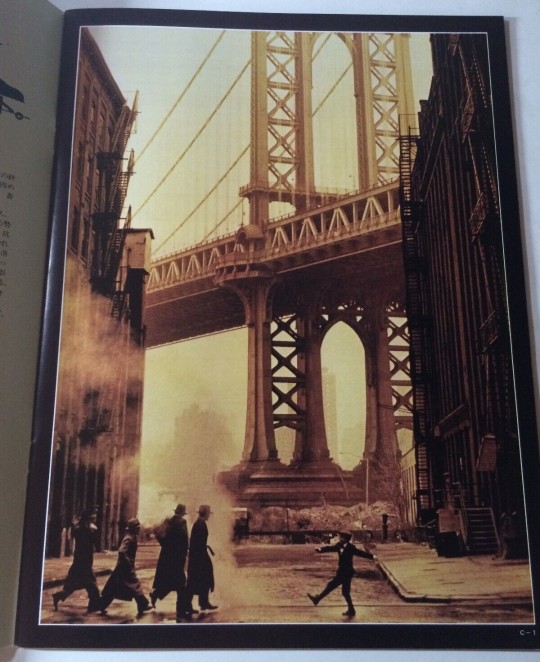
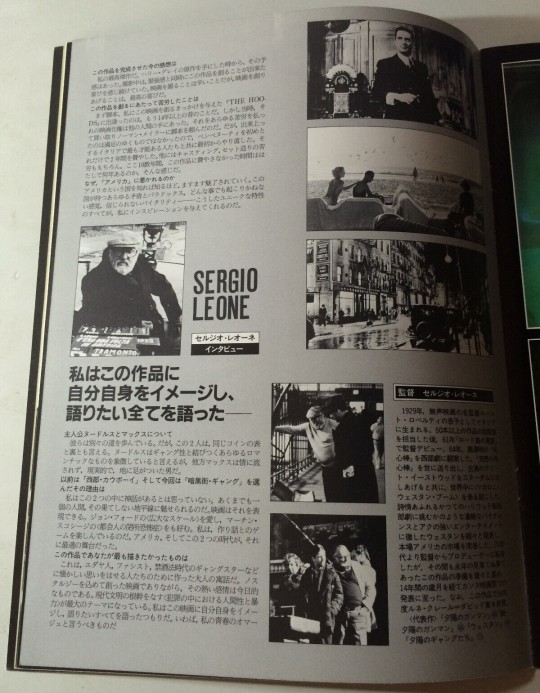





#Once Upon a Time in America#Sergio Leone#Robert De Niro#James Woods#Elizabeth McGovern#Jennifer Connelly#Treat Williams#William Forsythe#Scott Tiler#Rusty Jacobs#Brian Bloom#Adrian Curran#Harry Grey#Leonardo Benvenuti#Piero De Bernardi#Enrico Medioli#Franco Arcalli#Franco Ferrini#Stuart Kaminsky#Ernesto Gastaldi#80s
27 notes
·
View notes
Text
More Senate Shenanigans
So the Senate is sitting this week and at 2.30pm on Tuesday we’ve already had our fair share of drama.
First off, we had the swearing in of three new Senators, elected by recount. Hollie Hughes, replacement for Fiona Nash, may well be ineligible because of a job she took following her non-election in July last year and so was not sworn in. However, Senator Fraser Anning, replacement for One Nation’s Malcolm Roberts caused a stir. Instead of being led in by (as is traditional) his party leader, Pauline Hanson, he was instead brought in by Cory Bernardi (Australian Conservatives) and David Leyonhjelm (LDP). Hanson reports that Anning left the party to sit as an Independent after storming out of a party meeting, however Anning reported (in a press release which read ‘One Nation Senator for Queensland’ in the letterhead) that the first he knew of being an Independent was when Pauline made her statement earlier in the day. Anning also says that he asked the two other PHON Senators to accompany him for his swearing in, but at the last minute they were unable to (presumably at Hanson’s instruction).
The Senate also elected a new President, Scott Ryan, following Parry’s ineligibility and subsequent resignation. This means that Ryan has resigned from the Ministry in his role as Special Minister of State, because while not unprecedented, it is highly unusual for the President (or Speaker) to also be a Minister. Ryan had an eventful first Question Time, all Senators clearly compensating for the fact that without the House sitting, they were required to make twice as many interjections and points of order. Although there was no cardboard Kevin Rudd, as in Anna Burke’s first day as Deputy Speaker, things hardly went much better. Yesterday, Cory Bernardi also made the assertion that there was someone sitting in the Senate who knew that they were a dual-citizen and therefore ineligible, but had chosen not to say anything. Tasmania is now down two Senators, as Jacqui Lambie resigned this morning, following discovery that she was a dual-citizen as a result of her Scottish father. Lambie plans to recontest the Senate at the next election, and so does not intend to stand for the upcoming Tasmanian state election. However, she has said that if Labor MP Justine Keay is also found ineligible under s44, she would consider contesting the seat of Braddon in a by-election.
In other Lower House news, John Alexander has resigned over dual-citizenship claims, sparking a by-election in the seat of Bennelong. Labor has announced that controversial former-NSW Premier Kristina Keneally has been pre-selected to contest the seat. NXT MP Rebekha Sharkie is also undergoing scrutiny on citizenship grounds, because although her paperwork was completed in April last year, the letter she received on 4th July 2016 confirmed that her British citizenship had been renounced on 29th June - after the close of nominations and opening of pre-poll voting, but before the 2nd July election. This puts her in a similar boat to two Labor MPs, but there has been no High Court referral.
#auspol#citizenship#citizenship how many??#NXT#Jacqui Lambie#Scott Ryan#Cory Bernardi#Fraser Anning#Pauline Hanson#PHON#by-election#Kristina Keneally#John Alexander
1 note
·
View note
Link
A helpful and sensible (self-)analysis of the Australian Conservatives.
#cory bernardi#australian conservatives#australian politics#australia news#scott morrison#Australia#politics#right#liberal party of australia#Malcolm turnbull
0 notes
Photo

E nas arenas treinando é possível ver Cheongju Han Salem!! O que sabemos sobre ela é que é uma semideusa grega e que tem duzentos e vinte e sete anos. Outra coisa que as ninfas nos contaram é que Salem é extremamente boa ao usar sua foice, mas isso é esperado dos filhos de Hécate. Salem tem uma grande semelhança com a mortal Seo Yeji, mas isso é apenas a névoa agindo.
E nas arenas treinando é possível ver Ruby Pendergast!! O que sabemos sobre ela é que é uma semideusa indefinida e que tem vinte e três anos. Outra coisa que as ninfas nos contaram é que Ruby é extremamente boa ao usar seu catalisador, mas isso é esperado dos indefinidos. Ruby tem uma grande semelhança com a mortal Emily Alyn Lind, mas isso é apenas a névoa agindo.
E nas arenas treinando é possível ver Maria Vitória Romero Salvatierra!! O que sabemos sobre ela é que é uma semideusa indefinida e que tem vinte e quatro anos. Outra coisa que as ninfas nos contaram é que Vicky é extremamente boa ao usar sua lança e seu arco e flecha, mas isso é esperado dos indefinidos. Vicky tem uma grande semelhança com a mortal Lizeth Selene, mas isso é apenas a névoa agindo.
E nas arenas treinando é possível ver Francesca de Castella Bernardi!! O que sabemos sobre ela é que é uma semideusa romana e que tem vinte e três anos. Outra coisa que as ninfas nos contaram é que Francie é extremamente boa ao usar seu chicote, mas isso é esperado dos Vênus. Francie tem uma grande semelhança com a mortal Azul Guaita, mas isso é apenas a névoa agindo.
E nas arenas treinando é possível ver Scott Danvers!! O que sabemos sobre ela é que é uma semideusa romana e que tem vinte anos. Outra coisa que as ninfas nos contaram é que Scott é extremamente boa ao usar seu arco e flecha, mas isso é esperado dos filhos de Febo. Scott tem uma grande semelhança com a mortal Hailee Steinfeld, mas isso é apenas a névoa agindo.
E nas arenas treinando é possível ver Matteo Vespucci!! O que sabemos sobre ele é que é um semideus romano e que tem dezoito anos. Outra coisa que as ninfas nos contaram é que Matt é extremamente bom ao usar seu tridente, mas isso é esperado dos filhos de Triton. Matt tem uma grande semelhança com o mortal Cody Christian, mas isso é apenas a névoa agindo.
E nas arenas treinando é possível ver Alessandro Bellomo Vespucci!! O que sabemos sobre ele é que é um semideus grego e que tem vinte e oito anos. Outra coisa que as ninfas nos contaram é que Ale é extremamente bom ao usar suas espadas duplas, mas isso é esperado dos filhos de Tritão. Ale tem uma grande semelhança com o mortal Andrew Garfield, mas isso é apenas a névoa agindo.
E nas arenas treinando é possível ver Evgenya Romanoff!! O que sabemos sobre ela é que é uma semideusa romana e que tem vinte e cinco anos. Outra coisa que as ninfas nos contaram é que Ev é extremamente boa ao usar seu arco e flecha, mas isso é esperado dos filhos de Deimos. Ev tem uma grande semelhança com a mortal Madelaine Petsch, mas isso é apenas a névoa agindo.
E nas arenas treinando é possível ver Serpens!! O que sabemos sobre ele é que é uma criatura grega, e que tem oitocentos e cinquenta e um anos, mas aparenta ter dezenove. Outra coisa que as ninfas nos contaram é que Serpens é extremamente bom ao usar sua foice, mas isso é esperado dos plêiades. Serpens tem uma grande semelhança com o mortal Manu Rios, mas isso é apenas a névoa agindo.
E nas arenas treinando é possível ver Cyriacus/Cyrus!! O que sabemos sobre ele é que é um semideus romano e que tem aproximadamente dois mil e seiscentos anos. Outra coisa que as ninfas nos contaram é que Cyrus é extremamente bom ao usar sua espada Neudamdify, mas isso é esperado dos filhos de Belona. Cyrus tem uma grande semelhança com o mortal Sam Claflin, mas isso é apenas a névoa agindo.
E nas arenas treinando é possível ver Maria Cristina Toluca López García Flores!! O que sabemos sobre ela é que é uma semideusa grega e que tem vinte e quatro anos. Outra coisa que as ninfas nos contaram é que Toluca é extremamente boa ao usar sua corrente de cobre, mas isso é esperado dos filhos de Zeus. Loca tem uma grande semelhança com a mortal Alexa Demie, mas isso é apenas a névoa agindo.
E nas arenas treinando é possível ver Gaspard Dubouis!! O que sabemos sobre ele é que é um semideus grego e que tem vinte e dois anos. Outra coisa que as ninfas nos contaram é que Gasp é extremamente bom ao usar sua besta, mas isso é esperado dos filhos de Atena. Gasp tem uma grande semelhança com o mortal Timothee Chalamet, mas isso é apenas a névoa agindo.
E nas arenas treinando é possível ver Aryadne Woods!! O que sabemos sobre ela é que é uma semideusa indefinida e que tem vinte e quatro anos (aparenta vinte e um). Outra coisa que as ninfas nos contaram é que Ary é extremamente boa ao usar suas kunais, mas isso é esperado dos indefinidos. Ary tem uma grande semelhança com a mortal Zendaya, mas isso é apenas a névoa agindo.
2 notes
·
View notes
Photo

Once Upon a Time in America (1984)
Italian director Sergio Leone made a name for himself worldwide with the Dollars trilogy of Westerns starring Clint Eastwood as the Man with No Name. These movies, along with Once Upon a Time in the West (1968), had more stylized violence than the typical Hollywood Western, and audiences flocked to see what some waved off as pulp novelties. During this period, an idea had been reverberating in Leone’s mind; no longer could he ignore his imagination’s wills. Leone’s success led him to spend ten years working on this passion project, even declining an offer to direct The Godfather (1972). Based on The Hoods by Harry Grey, Once Upon a Time in America is a gangster epic filled with betrayal, crime, graphic violence, and regret. The film alternates between three time periods: the late 1910s/early ‘20s, the final three years of Prohibition from 1930-1933, and 1968. It is Leone’s most ambitious project after a thirteen-year absence from filmmaking, and his last.
In New York City’s Lower East Side, we follow a handful of young Jewish boys who engage in petty thievery, grow to complete contracts for organized crime, and later make their fortunes bootlegging during Prohibition. The film centers on David “Noodles” Aaronson (Robert De Niro as adult Noodles; Scott Tiler as a child). He is first seen in a Chinese opium den in 1933 after seeing three of his friends’ corpses – burnt beyond recognition – whisked away from a crime scene. A non-diegetic telephone rings during this wordless montage – a blaring, ceaseless ringing serving as an aural pang of guilt. That guilt will be gradually explained as the film progresses. Soon after this opium-induced retreat, Noodles will depart New York City for Buffalo. He will return decades later, his hair and soul fading, after receiving a suspicious invitation. Once Upon a Time in America’s first half concentrates on Noodles’ childhood, alternating with scenes from his 1968 return. The film’s second half intercuts between Prohibition and 1968.
Noodles’ boyhood friends are the protagonist’s de facto family. They include Patrick “Patsy” Goldberg (James Hayden as adult Patsy; Brian Bloom as a child), Philip “Cockeye” Stein (William Forsythe as an adult Cockeye; Adrian Curran as a child), Dominic (Noah Moazezi), and Maximillian “Max” Bercovicz (an excellent and up-and-coming James Woods as adult Max; Rusty Jacobs as a child). Fat Moe (Larry Rapp as an adult Moe; Mike Monetti as a child) is not part of the gang, but is nevertheless a friend who knows their secrets. The film also features Noodles’ young love interest, Deborah (Elizabeth McGovern as adult Deborah; a debuting Jennifer Connelly as a child) and friend/underage prostitute Peggy (Amy Ryder as adult Peggy; Julie Cohen as a child). Also appearing in the film are Joe Pesci (whose unclear role in the film is heavily downplayed in the European cut), Burt Young, Tuesday Weld, Treat Williams, and Danny Aiello. Louise Fletcher's cameo appears only in the most recent restoration.
Before continuing with this review, I want to note that there are multiple versions of Once Upon a Time in America available to viewers. Leone’s film debuted at the 1984 Cannes Film Festival with a runtime of 229 minutes (the “European cut”). For the American general release one week later, the film’s distributor (the Ladd Company, via Warner Bros.) cut the film to 139 minutes without Leone’s permission or input. The American theatrical cut – which was released on VHS in the 1980s and ‘90s and sometimes appears on television – rearranges scenes to play in a strictly chronological structure and removes essential plot details, essentially butchering Leone’s directorial intent. A 2014 Blu-ray release of Once Upon a Time in America includes additional footage bringing the runtime to 250 minutes, but the additional footage – due to the degradation of the original negative – appears worse for wear. This review is based on the European cut, which is the recommended print for all those seeing this film for the first time.
With a screenplay by Leone, Leonardo Benvenuti, Piero De Bernardi, Enrico Medioli, Franco Arcalli, and Franco Ferrini, Once Upon a Time in America is told through the lens of an unreliable narrator in Noodles. How one views the film changes radically depending on which period should be considered the “present”. If the viewer interprets Once Upon a Time in America as using the 1968 scenes as its anchor, the film is an old man’s reverie – where a lifetime of guilt is revisited and ghosts are confronted. In this interpretation, are Noodles’ memories of his childhood and young adulthood sanitized to spare him further pain? How does he square with all the pain he has been responsible for? Or perhaps one might view Once Upon a Time in America using 1933, as Noodles retreats to the opium den, as the anchor. Here, the 1968 scenes become an opium dream or a nightmare, a painful future that may have been. If indeed this is an opium-induced dream (which would make the 1968 scenes nothing but a hallucination), does that make the childhood scenes even less genuine than in the former interpretation? That Leone and his writers never force the viewer down either avenue speaks to its thoughtful screenplay.
No matter how one reads this film, it requires complete attention. Characters age over fifty years, friendships are formed and destroyed, and innocence is forever lost. Whether it is viewed as an old man occupied by his violent past or a young gangster attempting to smoke away his pain, Once Upon a Time is awash in regret. As much as viewers might sympathize with Noodles, Leone’s film portrays Noodles’ violence as the result of terrible choices influenced by his friends. Granted, there is one occasion where he kills in self-defense. But even that killing is laced with rage and revenge. Faced with the choice between his friends and the money involved with their operations and being with Deborah, Noodles will attempt to have both. Deborah’s disapproval of the gang’s behavior – her opposition becomes more tacit as she ages – assures that Noodles retain some semblance of a conscience as Max’s arrogance permeates through all their friends. Neither fully committing to the appeals from Deborah or his friends, Noodles will lose both.
In the film, smoke or steam is usually present just before or during moments tinged of bittersweet memory. Whether emanating as puffs from an opium pipe, the steam billowing from New York City’s manholes on a frigid day, or discharges from a passenger train, it is a demarcation of an event that will irrevocably affect Noodles’ life. Potentially, due to the film’s openness to interpretation, smoke or steam may also herald moments where Noodles’ memories are most suspect – through conscious reframing of his story or opium-influenced phantasms. Either way, certain narrative threads are left incomplete, raising questions over whether those dangling characters and subplots were Leone’s original intention. Perhaps Leone here is acknowledging the voids in human memory – people and things half-forgotten. Unlike its genre counterparts, Once Upon a Time in America leaves little space for comic relief. Any levity in the film is snuffed out almost immediately due to monstrous lust, performative masculinity, or Noodles’ weariness. The elderly Noodles is stone-faced, wrapped into a world frozen in time the moment he boarded that train to Buffalo. His pain is omnipresent in Once Upon a Time in America. Even in the earliest scenes of his childhood, the years of rumination can be felt in the film’s deliberate pace. Robert De Niro and Scott Tiler, respectively, embody the older Noodles’ sorrow and the younger Noodles’ conflicted feelings.
Like American Western films, the gangster genre is rife with mythologizing and, at times, a glorification of their protagonists’ violent lives. Where Westerns over the last half-century have deconstructed their role in the American mythos, the gangster film – probably because gangster films were never as ubiquitous as Westerns at their respective pinnacles of popularity – has not done so nearly as much introspection. Before Martin Scorsese’s Goodfellas (1990) and especially The Irishman (2019), Once Upon a Time in America stood mostly alone among gangster films as a rueful examination of its protagonist’s violent lifestyle. The film consistently undermines its characters’ celebrations and successes with the consequences of their prior actions. Those consequences weigh on Noodles still.
But Leone is not entirely successful in this regard. Once Upon a Time in America has two overlong rape scenes – both of which turned my stomach the longer they went on – following a fruitful robbery (this one follows an unsettling submissive fantasy by its victim) and a glamorous date, respectively. The two rapes are committed by Noodles; both scenes serve to highlight his descent into depravity rather than express a minimal concern for the victim. Once Upon a Time in America, already uninterested in developing its female characters beyond sex objects, frames Noodles as a husk of a man because of the murders and robberies he has committed, not his treatment of women. Just because the film has adopted Noodles’ viewpoint – in his childhood and young adulthood, he cannot differentiate between objectification and love – does not mean Leone and his screenwriters can wave away his misogyny as secondary to his violent tendencies. His misogyny and criminality are distinguishable, but both were learned from the same people and environment. This dynamic persists even from the first moment that Jennifer Connelly appears as the young Deborah. There, Deborah sexually teases the young Noodles in a way that neither reflects her personality as a child or as an adult. Is that the result of the opium clouding Noodles’ memory or is it Noodles’ obsession with Deborah?
Once Upon a Time in America is beautifully shot by Tonino Delli Colli (1966’s The Good, the Bad and the Ugly, 1997’s Life Is Beautiful) and edited by Nino Baragli (The Good, the Bad and the Ugly, Once Upon a Time in the West). Like a photograph that has faded somewhat but still captures the likeness and character of its subjects, the brown environments and warmly-lit interiors capture the spirit of these neighborhoods of New York City’s Lowest East Side. Life is hardscrabble here, with those born into the prevalent poverty rarely escaping from it. Their Jewishness, verbally and visually, is strangely downplayed by Leone. The film’s long takes – several last over thirty seconds – without any cuts from Baragli allow the viewer to reflect on its changing characters, internalizing the film’s scope and depth of Noodles’ introspection. For the 1968 scenes, the browns are mostly replaced by overcast grays in exterior and interiors. The colors, no longer as warm or as diverse, help the film navigate its temporal and tonal transitions.
youtube
Ennio Morricone’s powerful score does even more to strengthen the film’s emotional power. The recently-passed composer, best known for his work on Leone’s Dollars trilogy, was a classically-raised/taught, jazz-loving experimenter whose sound could be bold and brash. Upending expectations for what the Western could sound like with anachronistic electronic elements and guitar, Morricone suspends any anachronisms for his Once Upon a Time in America score. The viewer will hear an odd pan flute (not Morricone’s decision) and diegetic/non-diegetic jazz music, but the defining aspect of the score is its romantic minimalism. One does not associate minimalism with grand emotions, but the score’s romantic minimalism – encapsulated by “Deborah’s Theme” – does not preclude the pathos it evokes. The rests in the lushly-orchestrated “Deborah’s Theme” (according to Morricone himself, despite the cue’s name, it can also be interpreted as the film’s main theme) reflect Noodles’ silent longing and remorse. Even at mezzo piano with no dialogue or sound effects present, Morricone’s cues pierce the soul. As longtime collaborators, Leone respected Morricone’s talents, allowing his friend and colleague’s music to be the star for long stretches. Leone allows Morricone to envelop the viewer in its textural splendor. The orchestral renditions of “Amapola” and The Beatles’ “Yesterday” are effective in placement and arrangement. Whether it is his theme for childhood and poverty, for the film at large, or for Deborah, Morricone’s score to Once Upon a Time in America is an essential part of his film scoring career – a career that spans so many titles, that most of it has not been heard outside of his native Italy.
Before and when making this film, Leone intended to direct two films running around 180 minutes each. Convinced by his producers to whittle Once Upon a Time in America to the 269-minute version that should be sought for a first viewing, Leone was horrified to hear that the Ladd Company – frightened by the runtime and (justifiably) the rape scenes – decided to eviscerate his film. When word eventually (and inevitably) reached Leone’s North American fans that they would not be receiving a version of Once Upon a Time in America that respected Leone’s authorial voice, the film bombed at the box office and was savaged by most anyone who saw it. To some critics including the Chicago Tribune’s Gene Siskel, Once Upon a Time in America’s American theatrical version was the worst film of 1984; in an about face for those same critics, the European cut was the best film of 1984. Eighteen minutes of footage for Once Upon a Time in America have still not seen the light of day due to continuing legal entanglements surrounding them. Leone’s ardent admirers remain hopeful for their eventual inclusion on a future print.
As he challenged the tropes of American Westerns, so too did Leone subvert what might be expected from a gangster film. Or, perhaps with a cynical grin, Leone is challenging the essence and veracity of cinematic narrative. Once Upon a Time in America is an underappreciated, imperfect movie whose reputation continues to grow the further removed it is from its botched release. America’s traditions of tall tales and melting pot storytelling make villains and bystanders of the unsavory characters contained within. Haunted by a past that cannot be changed, Noodles attempts to reclaim his life’s story from those who have written it. As the viewer, we project our anxieties and insecurities onto images spliced to make narrative sense. Authorship disputes and the struggle between legend and fact permeate cinema. Seldom do they converge as movingly as they do here.
My rating: 9.5/10
^ Based on my personal imdb rating. Half-points are always rounded down. My interpretation of that ratings system can be found in the “Ratings system” page on my blog (as of July 1, 2020, tumblr is not permitting certain posts with links to appear on tag pages, so I cannot provide the URL).
For more of my reviews tagged “My Movie Odyssey”, check out the tag of the same name on my blog.
#Once Upon a Time in America#Sergio Leone#Robert De Niro#James Woods#Elizabeth McGovern#Joe Pesci#Burt Young#Tuesday Weld#Danny Aiello#James Hayden#William Forsythe#Larry Rapp#Ennio Morricone#Tonino Delli Colli#Nino Baragli#TCM#My Movie Odyssey
10 notes
·
View notes
Photo


Roland T. Owen, and the horror in room 1046
In Kansas City, Missouri, on the afternoon of January 2, 1935, a man walked into the Hotel President and asked for a room several floors up. He carried no luggage. He signed the register as “Roland T. Owen,” of Los Angeles, and paid for one day’s stay. He was described as a tall, “husky” young man with a cauliflower ear and a large scar on the side of his head. He was given room 1046.
On the way to his room, Owen told the bellboy, Randolph Propst, that he had originally thought to check into the Muehlebach Hotel, but was put off by the high price of $5 a night. When they reached 1046, Owen took a comb, brush, and toothpaste out of his coat pocket and placed them in the bathroom. Then, the pair went back out in the hall, where the bellboy locked the door. He gave Owen the key, after which the new guest left the hotel and the bellboy returned to his usual duties.
Later that day, a maid went to clean 1046. Owen was inside the room. He allowed her in, telling her to leave the door unlocked, as he was shortly expecting a friend. She noticed that the shades were tightly drawn, with only one small lamp to provide illumination. She later told police that Owen seemed nervous, even afraid. While she cleaned up, Owen put on his coat and left, reminding the maid not to lock the door.
Around 4 p.m., the maid returned to 1046 with fresh towels. The door was still unlocked, and the room still eerily dim. Owen was lying on the bed, fully dressed. She saw a note on the desk that read, “Don, I will be back in fifteen minutes. Wait.”
The next we know of Owen’s movements came at about 10:30 the next morning, when the maid came to clean his room. She unlocked the door with a passkey (something she could only do if the door had been locked from the outside.) When she entered, she was a bit unnerved to see Owen sitting silently in a chair, staring into the darkness. This awkward moment was broken by the ringing of the phone. Owen answered it. After listening for a moment, he said, “No, Don, I don’t want to eat. I am not hungry. I just had breakfast.” After he hung up, for some reason he began interrogating the maid about the President Hotel and her duties there. He repeated his complaint about the high rates of the Muehlebach.
The maid finished tidying the room, took the used towels, and left, no doubt happy to leave this strange guest.
That afternoon, she again went to 1046 with clean towels. Outside the door, she heard two men talking. She knocked, and explained why she was there. An unfamiliar voice responded gruffly that they didn’t need any towels. The maid shrugged to herself and left.
Later that day, a Jean Owen (no relation to Roland) registered at the President, and was given room 1048. She did not have a peaceful night. She was continually bothered by the loud sounds of at least male and female voices arguing violently in the adjoining room. Mrs. Owen later heard a scuffle and a “gasping sound” which at the time she assumed was snoring. She debated calling the desk clerk, but unfortunately decided against it.
Charles Blocher, the graveyard shift elevator operator at the hotel, also noticed unusual activity that night. There was what he assumed was a particularly noisy party in room 1055. Some time after midnight, he took a woman to the 10th floor. She was looking for room 1026. He had seen her around the President numerous times–she was, as he put it discreetly, “a woman who frequents the hotel with different men in different rooms.”
A few minutes later, he was signaled to return to the 10th floor. The woman was concerned because the man who had arranged to meet her there was nowhere to be found. Being unable to help her, Blocher went back downstairs. About half an hour later, the woman summoned him again to take her down to the lobby. About an hour later, she returned to the elevator with a man. Blocher took them to the 9th floor. Around 4 a.m. the woman left the hotel, followed about fifteen minutes later by the man. This couple was never identified, and it is unknown what, if anything, they had to do with Owen and room 1046.
At about 11 p.m. that same night, a city worker named Robert Lane was driving on a downtown street when he saw a man running down the sidewalk. He was puzzled to see that on this winter night, the stranger was wearing only pants and an undershirt.
The man waved Lane down, thinking he was a taxi driver. When he saw his mistake, he apologized and asked if Lane could take him someplace where he could get a cab. Lane agreed, commenting, “You look as if you’ve been in it bad.” The man nodded and growled “I’ll kill that [expletive discreetly deleted in newspaper reports] tomorrow.” Lane noticed his passenger had a wound on his arm.
When they reached their destination, the man thanked Lane, then exited the car and hailed a cab. Lane drove off, having no idea that he had just played a minor role in one of his city’s weirdest murder mysteries.
Around 7 a.m. the next morning, the President’s telephone operator noticed that the phone in room 1046 was off the hook. After three hours had passed without anyone placing the phone in its cradle, she sent Randolph Propst to tell whoever was there to hang up. The bellboy found the door locked, with a “Don’t disturb” sign out. When he knocked, after a moment he heard a voice tell him to come in. When he tried the door, he found it was still locked. He knocked again, only to have the voice tell him to turn on the lights. After a couple more minutes of fruitless knocking, Propst finally yelled, “Put the phone back on the hook!” and left, shaking his head at what he assumed was their crazy drunken guest.
An hour and a half later, the operator saw the phone was still unhooked. She sent another bellboy, Harold Pike, up to deal with the problem. Pike found 1046 still locked. He used a passkey to open the door–showing that it had again been locked from the outside. In the dimness, he was able to make out that Owen was lying on the bed naked. The telephone stand had been knocked down, and the phone was on the ground. The bellboy put the stand upright and replaced the phone.
Like Propst, he assumed their guest was merely drunk. He left without bothering to check Owen’s condition more closely.
Shortly before 11 a.m., another telephone operator noticed that the phone in 1046 was again off the hook. Once again, Propst was sent up to the room. He found the “Don’t disturb” sign still on the door. After his knocks got no response, he opened the door with his passkey and walked inside.
The bellboy found something far worse than mere intoxication. Owen, still naked, was crouched on the floor, holding his bloody head in his hands. When Propst turned on the light, he saw more blood on the walls and in the bathroom. The frightened bellboy rushed out and told the assistant manager, who summoned police.
The officers found that about six or seven hours earlier, someone had done dreadful things to Roland Owen. He had been tied up and repeatedly stabbed. His skull was fractured from several savage blows. His neck was bruised, suggesting he had been strangled. Blood was everywhere. This small hotel room had been turned into a torture chamber. When questioned about what had happened, the semiconscious Owen only muttered, “I fell against the bathtub.” A search of the room found more strangeness. There was not a single stitch of clothing anywhere in 1046. The room’s standard soap, shampoo, and towels were also gone. All they found was a label from a necktie, an unsmoked cigarette, four bloody fingerprints on a lampshade, and a hairpin. There was also no sign of the cords which must have been used to bind Owen and the weapon that stabbed him. A hotel employee reported that several hours before Owen was found, he had seen a man and a woman leave the President hurriedly. There was no doubt that, in the words of one of the detectives, “someone else is mixed up in this.”
While Owen was being rushed to the hospital, he fell into a coma. He died later that night.
Meanwhile, investigators were quickly realizing that this was no ordinary murder. Los Angeles police found no record of any Roland T. Owen, which led to the assumption that the victim had checked in using a pseudonym. An anonymous woman phoned police the night of Owen’s death, saying that she thought the dead man lived in Clinton, Missouri.
“Owen’s” body was taken to a funeral home, where it was publicly displayed in the hope that someone could recognize him. Among the visitors was Robert Lane, who identified him as the peculiar man he had seen on the night of January 3. Several bartenders testified seeing a man matching “Owen’s” description in the company of two women. Police also discovered that the night before “Owen” registered at the President Hotel, a man matching his description had briefly stayed at the Muehlebach, giving his name as “Eugene K. Scott” of Los Angeles. Unsurprisingly, no trace of anyone by that name could be found, either. Earlier, Owen/Scott had stayed at yet another Kansas City hotel, the St. Regis, in the company of a man who was never identified.
They were having no more luck with tracing the “Don” “Owen” had talked to during his stay at the President. Was he the man who was there with the prostitute? Was he the strange voice who had told the maid not to bother bringing in fresh towels? Was “Don” the man “Owen” had told Lane he wanted to kill? Was “Don” the man who had been at the St. Regis with him? All excellent questions, which were fated never to be answered.
Nine days after “Owen” died, a wrestling promoter named Tony Bernardi identified the dead man as someone who had visited him several weeks earlier to sign up for wrestling matches. Bernardi said the man gave his name as “Cecil Werner.”
While all of this established that “Roland Owen” was a very peculiar man, none of it was the slightest help in discovering his real identity, let alone the name of his killer. The woman’s hairpin found in his room, plus the angry male and female voices Jean Owen had heard led to talk that the murder stemmed from a “love triangle,” but that theory remained mere speculation. Police were becoming resigned to writing off his death as one of the unsolved mysteries, and by the beginning of March, preparations were made to bury the John Doe in an unmarked grave.
However, before “Owen” could be brought to the city’s Potter’s Field, the head of the funeral home in charge of the body received an anonymous phone call. The man asked that the burial be delayed until money could be sent to cover the costs of a decent internment. The caller claimed that “Roland T. Owen” was the dead man’s real name, and that Owen had been engaged to the caller’s sister. The funeral director said that the mysterious benefactor told him that Owen “just got into a jam.” He added that the police “are on the wrong track.”
Shortly afterward, the cash arrived via special delivery mail–again anonymously–and “Owen” was finally buried in Memorial Park Cemetery. No one attended the funeral other than a handful of detectives. More money was sent with equal mysteriousness to a local florist to pay for a bouquet of roses for the grave. It was accompanied by a card to be placed with the flowers. It read, “Love forever–Louise.”
The Owen case drifted into obscurity until late 1936, when a woman named Eleanor Ogletree learned of an account of the murder given in the magazine “American Weekly.” She thought the description given of “Owen” matched that of her missing brother Artemus. The Ogletrees had not seen him since he left his home in Birmingham, Alabama in April 1934 to “see the country.” The last his mother Ruby had heard from him were three brief, typewritten letters. The first of these notes arrived in the spring of 1935–several months after “Owen” died. Mrs. Ogletree later said she was suspicious of these letters from the start, as her son did not know how to type. The last letter said he was “sailing for Europe.” Several months after the last letter, she received a phone call from a man calling himself “Jordan. “Jordan” said that Artemus had saved his life in Egypt, and that her son had married a wealthy Cairo woman. When Mrs. Ogletree was shown a photo of “Owen,” she immediately recognized the dead man as her missing son. He was only 17 when he died.
The dead man had finally been identified. Justice for his brutal death, however, remained hopelessly elusive. This is one of those irritating unsolved murders that is nothing but a bunch of questions left in a hopelessly tangled mess. Why was Artemus Ogletree using multiple false names? What was he doing in Kansas City? Who killed him and why? Who was “Louise?” Who was “Jordan?” Who sent the money to pay for Ogletree’s funeral? Who really wrote those letters to Ruby Ogletree? What in God’s name happened in room 1046?
It’s almost certain we will never know. The investigation into Ogletree’s death was briefly reopened in 1937, after detectives noted similarities between his murder and the slaying of a young man in New York, but this also went nowhere. The case has remained in cold obscurity ever since, except for one strange incident about ten years ago. This postscript to the story was related in 2012 by John Horner, a librarian in the Kansas City Public Library who has done extensive research into the Ogletree mystery. One day in 2003 or 2004, someone from out-of-state phoned the library to ask about the case. This caller–who did not give his or her name–said that they had recently gone through the belongings of someone who had recently died. Among these belongings was a box containing old newspaper clippings about the murder. This caller mentioned that this box also contained “something” which had been mentioned in the newspaper reports. Horner’s caller would not say what this “something” was.
It seems only fitting that a case so mysterious throughout should have an equally baffling last act.
111 notes
·
View notes
Text
Cold weather makes a big difference it's all about metallurgy you can't use pure titanium and titanium alloy doesn't do too well unless it's a perfect mix and a friend here knows how to do it but really A lot of people studied it for real and one of them was Bill pueschel it was nice to my grand nephew and he studied him and talked to him about things ask him his opinion on things and about the boys and when he was doing any helped and he helped us my grand nephew as well and studies at St John's and he is a smart person he said he's an engineer and he knows his stuff and he he was in Germany and basically is from Germany says he's from Germany okay and German p*** and he knows how to speak it and he's a sharp pillow and I like them because of that it's easier to get along with him along with the women Bill Pierce and they often thought that was them not Scott was me obvious reasons those guys are really going nuts they want the Camaro and they want the new one so he's going to send it to him and he says it's kind of tough and they know about it and I'm going to tell him about it first and it might be somewhere else like California but then he says it's kind of worse there so I do see what you're saying so you have to go to the max are and the max will like it and that's why they don't want you to know still competition but it's smart and Mike wants one it says he wants these 69 it says we have a replica it's different it's still EMP proof that's not a new one he wants both so we're going to do that and we can work a deal because it's more like need money
Mac I did the whole top part and he did like the last sentence or phrase
Thor Freya it's true too like the last phrase but seriously these guys can sponsor and they can do that and they're fighting Tommy f so tough fight here and he was by the courthouse and John remillard was over the top but his job was not really clear to him so now he gets it he'll probably calm down on it a Mac will have to do it. And he's going to be real excited and will send it to him but he'll probably understand you don't really know where it comes from and it's true he doesn't have any car or vehicle himself and in the first one will have that's probably going to be a Chinese motorcycle even though he made the cars really really cheap it's going to hang out with Mark again and well the frame on the Briggs & Stratton car they're probably end up being Brad someone saying, and no Mark is not Brad or Bill pixel as a matter of fact we're talking about Billy O'Hare and that's actually Billy's and bernardi so he saw the creature
0 notes
Note
Slave raiding in Medieval Italy with Clint leading the raid and Bruce being among the captures? Pretty please?
Clint sat on his horse and looked over the village in the valley beneath him. Natasha led her own horse beside his and looked at him.
“What do you think?” she asked and Clint shrugged.
“They rely on the mountains as protection. Only one way in over there,” he pointed at the valley cut opposite of them. “No guards, no nothing,” he said and shook his head.
“And lots and lots of sturdy men for the markets in Morocco,” she grinned. Clint nodded and looked over his shoulder. He gestured at Barney, his brother. He and a few of their men would block the entrance to the valley and the rest of them would come down the mountains around the village. Barney mounted his horse and he and his men rode away. Twenty minutes later Clint saw his brother arrive on the other side of the village.
“Ready?” he asked Natasha and the rest of their men and when she nodded he put on his mask, pulled out his sword and spurred his horse.
An hour later they had rounded up all the men in the village. The women were locked in one of the bigger houses and Clint dismounted. The men were tied up and on their knees and Clint and Nat went over to them. He walked along them and scrutinized them.
“Too old,” he said and pointed at the first man. “Too old… too fat… this one… this one, too… too old… this one…” he said and Nat marked the ones they wanted to keep. They were almost at the end of the line when Clint stopped. A man knelt in front of him, his hands tied behind his back like all the other man but this one was different. He had curly hair and sinful lips, long lashes and beautiful dark eyes. He was scared - like all of them - but also curious. Clint grabbed his face, not too tight, gently, turned it from left to right and back. He touched his lips with his thumb and the man swallowed but didn’t look away. There was something… something…
Clint turned to look at Nat, “This one,” he said and she rolled her eyes but took the man’s arm and forced him to rise. She and one of their men led him away and Clint continued to assess the goods.
“Too young… too small… this one… this one… this one… too weak… too sick… this one…”
Later that evening they were back in their camp. The men they wanted to sell were locked up in a pen and heavily guarded. They would bring them to Genoa where Captain Barnes would buy them and bring them to Morocco.
Scott and Peter brought the prisoner in his tent and went back to the campfire to celebrate their successful raid. He and Barney had brought them a barrel of rum and the two wanted to get their share. The prisoner knelt in the tent, bound to the main post and tried to get rid of his ties.
“It’s futile,” Clint said. “You wouldn’t get out of the camp.”
The man glared at him angrily and Clint felt his dick twitch in his pants. He was hot when he was angry. He hunkered down in front of him and looked at him, scrutinized him carefully.
“What’s your name?” he asked and grabbed his face, forced him to look at him. The man squeezed his lips together and Clint pressed his thumbs in his cheeks. “What’s your name?” He repeated.
“Dottore Brizzio Bernardi,” the man pressed through his teeth.
“A doctor, huh?” Clint asked. “I had no idea that a small village like that has its own doctor.”
“I was there to treat a patient,” he said. A smirk crept on Clint’s face.
“And now you’re just a slave,” he grinned. “My slave.”
“Why are you doing this?” the doctor asked. Clint shrugged.
“It’s family business,” he said. He reached out and cupped the man’s face, touched his lips again. “It’s what we do.”
“You can still let them go,” Brizzio said. Clint shook his head.
“No. They will go to Morocco soon,” he said. “But you…” he smirked again, “I guess I will keep you.”
The doctor looked up, held Clint’s eyes with his. “Why? Why me?”
“You’re cute,” he shrugged. “And we could need a doctor. Sometimes people… get hurt.”
“I will never work for you,” Brizzio spat and glared angrily.
“We’ll see, sweetheart, we’ll see.”
19 notes
·
View notes
Photo

#Once Upon a Time in America#Sergio Leone#Harry Grey#Leonardo Benvenuti#Piero De Bernardi#Enrico Medioli#Franco Arcalli#Franco Ferrini#Stuart Kaminsky#Ernesto Gastaldi#Robert De Niro#James Woods#William Forsythe#Scott Tiler#Brian Bloom#Rusty Jacobs#80s
14 notes
·
View notes
Text
Cory Bernardi resigns from politics after 13-year profession, handing his seat to the Liberal Celebration - ABC News (Australian Broadcasting Corporation).

Cory Bernardi resigns from politics after 13-year career, handing his seat to the Liberal Celebration
Posted January 20, 2020 18:35:03
Independent South Australian senator Cory Bernardi has actually officially resigned from Federal Parliament after a profession of 13 years, handing over his seat to the Liberal Party.Key points
:
Senate president Scott Ryan said he had gotten Mr Bernardi's letter of resignation today, which would work immediately.
"I have actually received a letter of resignation from Cory Bernardi as a senator for South Australia. The resignation takes effect right away," he stated in a post on social networks.
"I will shortly be writing to His Excellency the Hon Hieu Van Le, Governor of SA, to notify him of this job, which will be filled out accordance with Section 15 of the Constitution."
"The timing is right, I just do not wish to go back to it next year-- I feel in a very pleased and comfy place," Senator Bernardi stated on Sky News in November.
"If absolutely nothing else I opened great deals of discussions, I stayed true to my worths and concepts. Individuals will make judgments about whether they were ideal or wrong.
"Among the terrific things is my integrity is undamaged.
"I feel extremely comfy with who I am and what I have discussed and if I have remorses, there are extremely couple of."
Liberal prospects to contend for Senate seat
Mr Bernardi has actually typically been touted as an outspoken critic of both same-sex marital relationship and climate change.He stopped the
Liberal Celebration in 2017 to form the Australian Conservatives, but his party struggled to draw in support at last year's federal election.He revealed
in June in 2015 that a "lack of political success" and cash had suggested he was deregistering the Australian Conservatives.He protected a six-year Senate term when he was chosen in 2016 and his resignation will now trigger a casual vacancy.Despite him breaking away from the Liberals, the party will still
have claim to the seat, as he was a Liberal member when elected.Among the prospects tipped to contest his Senate seat will be former Law Council president Morry Bailes and SA Legislative Council president Andrew McLachlan.
0 notes
Photo

ALOHA ALL! ^_^ Thanks for waiting everyone! I'm proud to announce the lineup of artists for the upcoming GORDON RIDER 15 YEAR ART TRIBUTE COLLECTION BOOK: • Dwayne Acoba • Keith Amano • Todd Bernardy • Michael Cannon • Gordon Chan • Wendy Chen • Jackson Chun • JME Foronda • Mark Gamiao • Andrew Gutierrez • Michael Hraba • Dennis Imoto • Robert Jacob • Kokoro Grafix • Kristopher Lohman • Alan Low • Mailiflower • Jeff Martinez • Lee McIntosh • Jon J. Murakami • Nobu & Loki Cat • Devin Oishi • Brett Okamura • Felipe Ondera • Tiffany Peek • Kevin Sano • Jessica Sato • Danny Segura • Scott Shinsato • Spactana • Spel Killz • Kevin Suzuki • Quinn Suzuki • Tara Tamayori • Keli Tashiro • Keicie Tonouchi • Leicie Tonouchi • Trace Tsujioka • Many thanks to EVERYONE who submitted artwork and some who turned in MULTIPLE ENTRIES! • Due to some other immediate project deadlines, the book will be released either in the latter of August or September 2020. #jonjmurakami #gordonrider https://www.instagram.com/p/CCxJNVwja8J/?igshid=7lsitnbzoqd0
0 notes
Text
New fan studies research - July 25th, 2017
A weekly list of new/recent fan studies research that’s just been added to the Fan Studies Bibliography. Works are divided into things that are open access (=immediately readable for anyone) and not open access (=behind a paywall or not yet public).
This week was a bit slow, but we added some more works Brazilian Portuguese, and also our very first entry in Russian. There’s much more fan studies work in Russian than this, of course, but we haven’t gotten around to parsing more of it yet.
If we missed anything or made a mistake, submit a correction and we’ll fix it in next week’s edition. Happy reading!
Open access
Grijó, Wesley Pereira, and Taluana Panizza. 2017. “Fanfiction e ficção seriada televisiva: práticas da cultura participativa em Malhação - fanfiction and television serial fiction: participatory culture experiences in Malhação.” Revista GEMInIS 8 (1): 126–50. http://www.revistageminis.ufscar.br/index.php/geminis/article/view/284
Hutabarat-Nelson, Tiffany M. 2017. “Fantastical Body Narratives: Cosplay, Performance, and Gender Diversity.” PhD dissertation, Louisville: University of Louisville. http://ir.library.louisville.edu/etd/2669/
Sung, I. L. Hong, and Marshall Magnusen. 2017. “From Virtual Reality to Reality: Examining the Relationship between Sport Video Gaming and Sport Consumption Behaviors.” Journal of Physical Education and Sport Management 8 (4): 41–49. doi:10.5897/JPESM2016.0272
Кудасов, А. Е., and Т. Ю. Кузнецова. 2017. “К Вопросу О Понятии Отаку И Его Субкультурной Идентичности - To the issue of the otaku definition and its subcultural identity.” Аллея Науки, no. 6: 99–102. http://alley-science.ru/domains_data/files/Zurnal_February_2017/K%20VOPROSU%20O%20PONYaTII%20OTAKU%20I%20EGO%20SUBKULTURNOY%20IDENTIChNOSTI.pdf
Not open access
Bernardi, Daniel, and Julian Hoxter. 2017. Off the Page: Screenwriting in the Era of Media Convergence. University of California Press.
Click, Melissa, and Suzanne Scott, eds. 2017. The Routledge Companion to Media Fandom. 1 edition. Routledge.
Highfield, Tim. 2017. “Social TV and Depiction of Community on Social Media: Instagram and Eurovision Fandom.” In Digital Media: Transformations in Human Communication [2nd Ed.], 156–165. Peter Lang. https://eprints.qut.edu.au/108846/
Porto, Cristiane de Magalhaes, Renata Tavares Benia, and Daniella de Jesus Lima. 2016. “‘Unleash your imagination’: fandoms and contribution of fanfictions to the educational context based on the case of narrative of HIM/’Unleash your imagination’: os fandoms e a contribuicao das fanfictions para o contexto educacional baseada no caso da narrativa de HIM/ ‘Unleash your imagination’: los fandoms y la contribucion de las fanfictions para el contexto educacional basada en el caso de la narrativa de HIM.” Acta Scientiarum. Education 38 (4): 373–83. http://go.galegroup.com/ps/i.do?p=AONE&sw=w&issn=21785198&v=2.1&it=r&id=GALE%7CA489216794&sid=googleScholar&linkaccess=abs
Samer, Roxanne, and William Whittington. 2017. Spectatorship: Shifting Theories of Gender, Sexuality, and Media. University of Texas Press
Walters, Gabby, Richard Shipway, Lee Miles, and Mariana Aldrigui. 2017. “Fandom and Risk Perceptions of Olympic Tourists.” Annals of Tourism Research. http://www.sciencedirect.com/science/article/pii/S0160738317301056
7 notes
·
View notes
Photo










1963 Zorro e i tre moschettieri Also Known As (AKA) Uk Zorro and the Three Musketeers Austria Zorro und die drei Musketiere Brazil Zorro e os 3 Mosqueteiros Denmark Zorro og de tre musketerer Finland Zorro ja kolme muskettisoturia Greece (video title) O Zorro & oi treis somatofylakes Greece (transliterated) O Zorro kai oi treis somatofylakes Greece (DVD title) Oi 3 somatofylakes kai o Zorro Greece (reissue title) Ta tessera astraftera xifi tou Zorro Hungary Zorro és a három muskétás Mexico El Zorro y los tres mosqueteros Serbia Zoro i tri musketara Sweden Zorro och de tre musketörerna USA (TV title) Mask of the Musketeers West Germany (TV title) Das Phantom und die drei Musketiere West Germany Zorro und die drei Musketiere Regista: Luigi Capuano Musica composta da: Carlo Savina Anteprima nazionale: 14 febbraio 1963 Release Dates Italy 14 February 1963 West Germany 6 December 1963 Mexico 10 December 1964 Denmark 16 August 1965 Austria May 1966 Produttore esecutivo: Ferdinand Felicioni Coreografia: Elio Micheli Cast (in credits order) Gordon Scott Gordon Scott ... Zorro José Greci José Greci ... Isabella Giacomo Rossi Stuart Giacomo Rossi Stuart ... Athos Livio Lorenzon Livio Lorenzon ... Porthos Franco Fantasia Franco Fantasia ... Count of Sevilla Mario Pisu Mario Pisu ... Count of Tequel Nazzareno Zamperla Nazzareno Zamperla ... D'Artagnan (as Tony Zamperla) Nerio Bernardi Nerio Bernardi ... Cardinal Richelieu Ignazio Leone Ignazio Leone Giuseppe Addobbati Giuseppe Addobbati Giulio Maculani Giulio Maculani Ignazio Balsamo Ignazio Balsamo Enzo Maggio Enzo Maggio Luciano Bonanni Luciano Bonanni Renato Malavasi Pasquale De Filippo Pasquale De Filippo Amina Pirani Maggi Amina Pirani Maggi Jan De Vecchi Jan De Vecchi Ugo Sasso Ugo Sasso Andrea Fantasia Andrea Fantasia Bruno Scipioni Bruno Scipioni Charles Fawcett Charles Fawcett ... (as Charles Fawcet) Benito Stefanelli Benito Stefanelli Nando Tamberlani Nando Tamberlani Gianni Rizzo Gianni Rizzo ... King Philip Maria Grazia Spina Maria Grazia Spina ... Manuela Roberto Risso Roberto Risso ... Aramis Rest of cast listed alphabetically: Bruno Ariè Bruno Ariè ... Fighter (uncredited)
#zorro e i tre moschettieri#zorro#i tre moschettieri#luigi capuano#cappa e spade#cappa e spada#giallofever#giallo#gialli#giallo fever#italian giallo#italian cult#italian sexy comedy#cult#cinema cult#international cult
5 notes
·
View notes